Notes by an Egyptian Resident Artist in Jung-gu 2 – ‘The World As We Know It’
인천에서 생활한 지 거의 두 달이 되어간다. 인천 중구는 고지대에 자리 잡았고, 지역 건축물들의 분위기로 인해 마치 천상의 작은 세계에 와있는 듯한 기분이 들기 때문에 다른 지역으로 이사를 하거나 중구 이외의 지역을 돌아다니고 싶은 마음이 들지 않는다. 고대 이집트 예술품은 전통을 표현하고 있으며, 모든 예술품은 세계를 표현하고자 제작되었다. 고대 예술품이 담고 있는 세계관에 따르면, 세계란 땅의 선(대지의 신 Geb)과 하늘의 선(하늘의 여신 Nut) 그리고 그사이의 기둥들이 지탱하는 구조로 이루어져 있다. 그리고 이 세계 이외의 것들은 중요하지 않다. 이러한 세계관은 내가 인천 중구에 대해 가지고 있는 생각과 같다.
Incheon has been my home for almost two months now. Jung-gu, Incheon has had this effect on me that makes it hard to exit the area and roam around in other places, the nature of the architecture and elevation separates it from the surrounding areas and gives you the feeling that it is on top of the world, a fantastic small world. In Ancient Egyptian art making traditions; every artwork was made as a representation of the world. Meaning, you would have the earth line (‘Geb’ the Earth God) the Skyline (‘nut’ the sky goddess) and the pillars, to support the structure of that world, and together they conceive the world in between. Whatever existed outside the peripheries of such world did not matter as much. This is how I have come to perceive Jung-gu, Incheon thus far.
 출처 : 위키피디아
출처 : 위키피디아
자세히 보기
인천에서의 저녁 식사와 커피
Dinner and coffee in Incheon
한국에 온 외국인이라면 집에서 음식을 요리하여 먹는 것보다 밖에서 해결하는 것이 훨씬 저렴하다는 것을 매우 짧은 시간에 알게 되었고, 나의 경우도 마찬가지로 인천에서 먹는 한국 음식에 관한 경험들로 하루하루가 이어진다. 한국에 온 지 얼마 되지 않았을 때, 음식을 주문할 때 사진을 보고 결정하거나 일정한 기준 없이 음식을 주문하였다. 지금은 한국 음식과 식당에 더욱 익숙해졌다. 그래서 나는 묵사발(Acorn noodle soup), 묵밥(cold Acorn soup with rice), 전(Korean pie, 물론 묵으로 만든 전), 불고기(Spicy Beef stew) 또는 자장면과 같은 한국식 중국요리 중에서 내가 무엇을 먹고 싶어 하는지 알고 있으며 먹고 싶은 음식을 주문할 수 있다. 잔치국수, 비빔밥이나 생선구이는 다양한 밑반찬들과 함께 나온다. 내 예상과는 다르게, 커피가 서양 음료임에도 불구하고 한국에서 커피는 내가 가본 그 어느 나라에서보다 대중적인 음료이다. 그러므로 지역 주민들을 비롯해 내 스튜디오 방문객들을 대상으로 Turkish 커피라고도 불리는 Arabic 커피를 선보이고 있다. 평상시 카이로 길가의 상점에서도 마실 수 있는 이 커피에는 질 좋은 원두 가루와 카르다몸 향신료가 첨가되어 있다. 이 커피의 맛에 대한 평가는 극과 극이다. 사람들이 커피를 마시는 동안, 나는 수십 년 전에 사람들이 Fegan 이라 불리는 자기로 된 커피잔을 통해 커피를 마시는 사람의 미래를 어떻게 점쳤는지를 들려줬다. 또한 커피에 넣는 설탕의 양에 따라 달라지는 커피의 이름에 관해서도 이야기를 해줬다.
Any foreigner who comes to Korea learns immediately that eating out is much cheaper that cooking at home, thus comes my everyday experience with Korean food in Incheon. At first I used to pick from photos or order things randomly. Now, I am more acquainted with the local dishes and restaurants. I now get to pick and choose whether I feel like having Acorn noodle soup (Muk), cold Acorn soup with rice, Korean pie—which is also is made out of acorn— Spicy Beef stew, Chinese food that was first invented in Korea such as the soy bean noodles. Janchi gooksoo noodles, bimbap, bibimbap or Grilled fish with so many side dishes that combined would make a full main dish. Unlike what I expected, coffee—in the western sense—is much more common in Korea than any other place I have visited before. Hence, I began to introduce residents of the area or visitors to my studio to Arabic coffee, which we also call Turkish coffee. This coffee, which we usually drink at local coffee shops in the streets of Cairo, consists of very fine coffee grind and cardamom spice. The reaction to the taste here has varied from really appreciating it to absolutely not. I then tell people while drinking it stories about how people, a few decades ago used to read the future of a coffee drinker in their porcelain cup or as we call it ‘Fengan.’ I also tell them about the five different names we have for the coffee as the amount of sugar changes.
 강화에서 먹은 국수, 강화도, 인천
강화에서 먹은 국수, 강화도, 인천
Ganghwa Noodles, Ganghwa Island, Incheon
©Lamis Haggag
 Dakmianga, Incheon
Dakmianga, Incheon
©Lamis Haggag
강화로의 두 번째 방문
Second visit to Ganghwa
소창체험관에서 개최된 소창 면직물 워크숍에 참석하기 위해 강화도를 방문하였다. 나에게 강화도는 육지보다는 편안한 분위기를 지니고 있는 해안 도시의 느낌으로 다가온다. 그러나 섬으로 들어간다는 것은, 특히 한국말을 못하는 사람에게는 커다란 도전으로 다가온다. 내가 강화도를 방문했을 때에는 매년 열리는 ‘세대를 잇다’ 축제 준비로 한참 바빴던 시기였다. 바쁜 와중에도 지역주민들은 나를 매우 따스하게 반겨주었다. 3시간 워크숍 동안 참가자들은 한국어와 아랍어로 표기한 라이노컷 디자인의 ‘소창’ 표지를 만들었다. 이번 워크숍은 소창과 같이 유지되고 보존될 가치가 있는 오랜 전통에 대한 감사함을 표현하고자 개최되었다. 이집트는 한때 세계에서 가장 값비싸고 최상의 품질을 자랑하는 면직물을 생산했었지만 값싼 면직물 수입을 통해 쇠퇴하였고, 이러한 수입을 통해 부를 축적한 이들은 관련 종사 농부들로 하여금 면직 생산을 중단할 것을 강요하고 있다. 그러나 강화는 소창 면직물을 보존하고 유지할 기회를 여전히 가지고 있음을 느낄 수 있다. 소창 면직물 역사에 대해서 강화 지역 참가자들은 전혀 모르고 있었다. 그들이 소창 면직물에 대해 알고 있는 정보란 오직 소창 면직물이 아기 기저귀로 사용된다는 것뿐이었다. 나 역시 대부분 많은 양의 소창 면직물이 공장을 통해 판매되고 있으며 일반 대중에게는 쉽게 보급되고 있지 않다는 사실을 알게 되었다.
워크숍 후 행사 주체자는 나에게 잔치국수를 사주었고, 그 후엔 한 달 전에 개장했다는 소식을 들어가 보고 싶었던 ‘조양 방직 카페’로 데려갔다. 방직카페는 한때 남한에서 가장 오래된 공장으로 소창 면직물을 생산하기도 하였으나 현재는 카페로 사용되고 있다. 현재 조양 카페는 골동품 수집가가 소유하여 운영하고 있으며, 실내에 모든 세부적인 것들은 놀라울 만큼 훌륭하였다. 오래된 방직 기계가 놓여 있으며 서랍에는 사용설명서가 있었다. 카페의 모든 것들이 잘 보존되어 있었으며 미술품과 공예품들로 꾸며져 있었다.
This time my visit to Gnghwa Island was to conduct a workshop of linocut on So-change fabric at the So-chang experience center. Ganghwa island feels like a coastal city, always more relaxed than the mainland. But getting access to the island is very challenging, especially to a non-Korean speaker. Once I got there I was welcomed as usual by the very friendly residents, even though they were busy preparing for Sedaereul Itta festival, a festival that is part of a series of festivals taking place this year. We had a 3-hour workshop, during which the participators made a Korean and Arabic sign of the word So-change surrounded by linocut designs of their own. The target of the workshop was to show appreciation for an old tradition that is worth maintaining, which is that of the So-chang. In my home country, what was once the best and most expensive cotton in the world has been replaced by imported cheap cotton and local farmers are sometimes forced into terminating their activity for the rich to make money off of imported goods. However, I feel there is still a chance to help save the So-chang fabric in Ganghwa Island. When introducing the history of the So-Chang fabric, the participators who all live on the island, were not totally familiar with it. Their only knowledge of it was of the fabric being used as baby diapers. I also learnt from them that it is mostly sold through the factories in large amounts, which makes it less accessible to the public.
Afterwards, the organizers took me for Noodles with anchovy soup (Janchi gooksoo) and then we headed to a place I was looking forward to visit since I heard about its opening a month ago, the ‘Joyang Bangjik’ café. The oldest factory in South korea, which was transformed into a coffee shop, which also happens to be a So-change factory.
The café was overwhelming as it is owned and ran by an antique collector, the detail in every corner and the size were breathtaking. The space had old sewing machines from the factory that still had their manuals in the drawers. Every part of it was well preserved and complemented with artworks and artifacts, within a contemporary setting
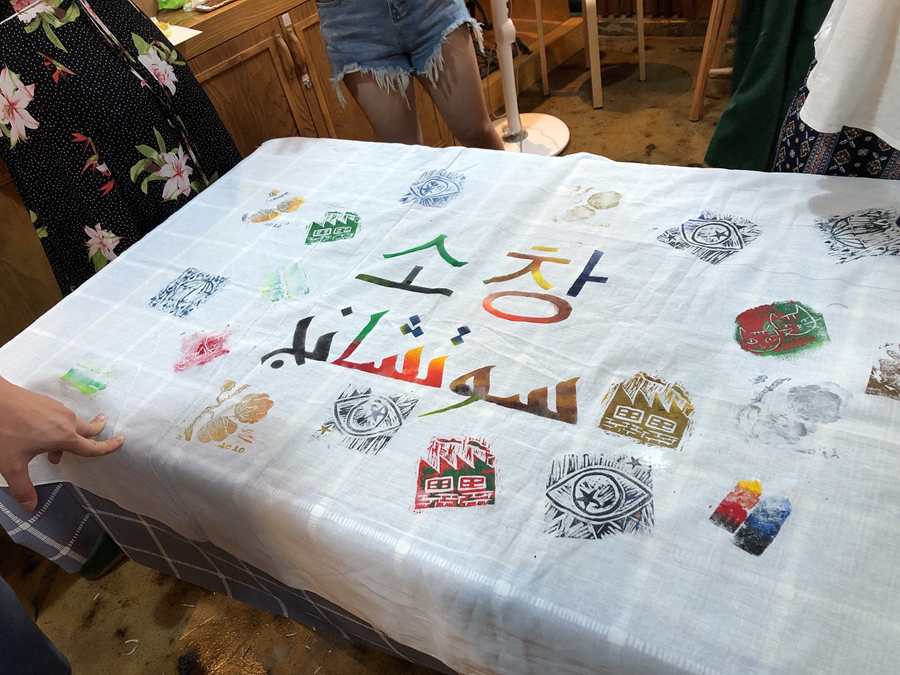 소창체험관, 강화도, 인천
소창체험관, 강화도, 인천
So-Chang experience center, Ganghwa Island, Incheon
©Lamis Haggag
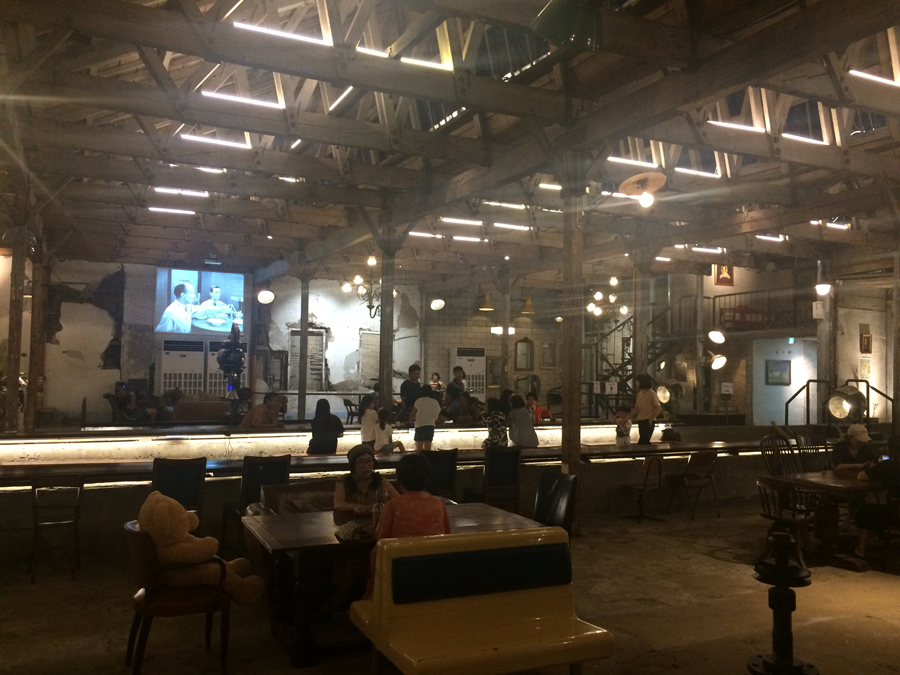 조양 방직, 강화도, 인천
조양 방직, 강화도, 인천
Joyang Bangjik, Ganghwa Island, Incheon
©Lamis Haggag
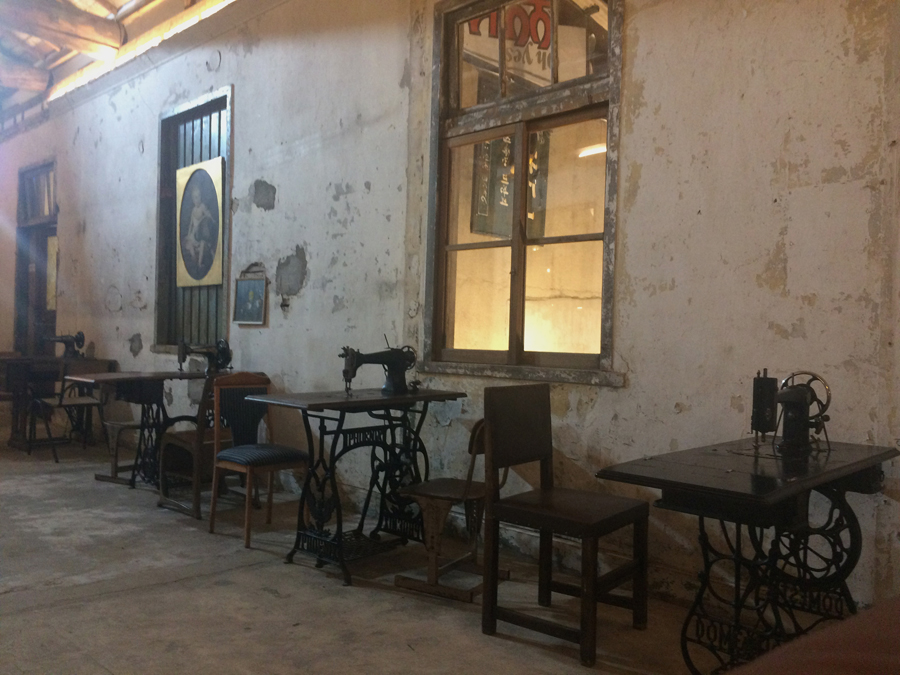 조양 방직, 강화도, 인천
조양 방직, 강화도, 인천
Joyang Bangjik, Ganghwa Island, Incheon
©Lamis Haggag
동대문부터 양기 시장까지
동대문 시장에 관하여 이야기를 들었을 때는 ‘인천아트플랫폼’에서 프로젝트의 수행을 위해 한국 전통 면직물을 찾아보기 시작했을 무렵이었다. 시장엔 모든 것들이 있었고 판매하는 물건의 종류에 따라 구역으로 나누어져 있다. 이집트 시장과 매우 흡사하지만, 동대문 시장이 훨씬 잘 체계화되어 있다. 그다음으로 알게 된 시장이 동인천에서 한복 천을 살 수 있는 양기 시장이다. 양기 시장은 한결 조용하고 돌아다니기에 복잡하지 않아 언제나 그렇듯 선물을 받는 느낌이었다.
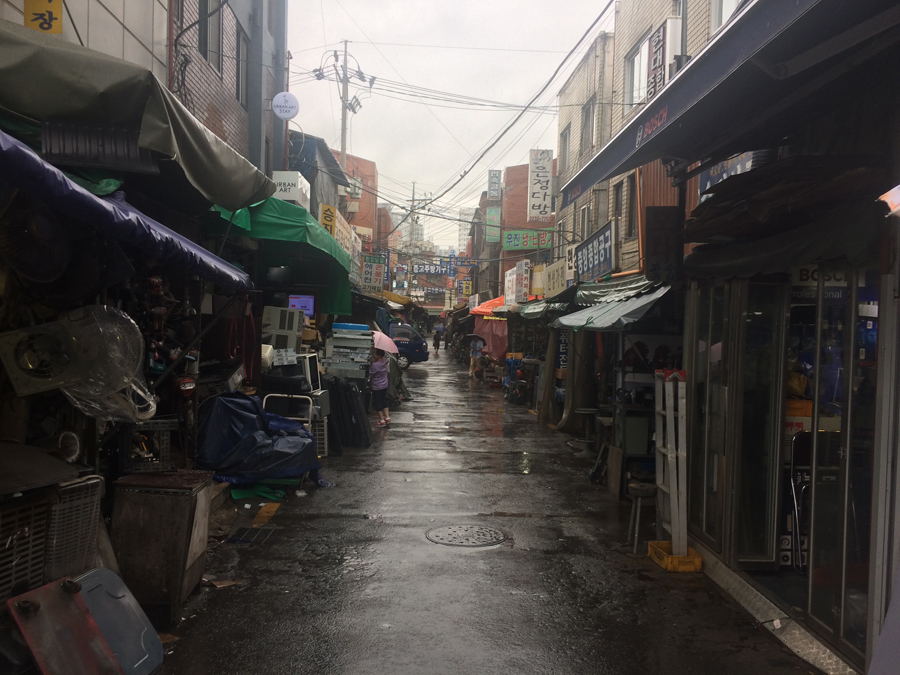 동대문 시장,서울
동대문 시장,서울
Dongdaemun Market, Seoul
©Lamis Haggag
 일 아타바 시장, 카이로
일 아타바 시장, 카이로
El-Ataba Market, Cairo
출처 : 바로가기
글/사진
라미스하가그(Lamis Haggag)
작가정보 : 바로가기
번역
김영모






![[큐레이션 콕콕] 키워드로 보는 2020 코리아](http://news.ifac.or.kr/wp-content/uploads/2019/12/kok01_s-351x185.jpg)
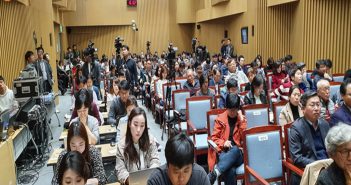
![[큐레이션 콕콕] 요즘, 편의점](http://news.ifac.or.kr/wp-content/uploads/2019/12/191210_2_S-351x185.jpg)